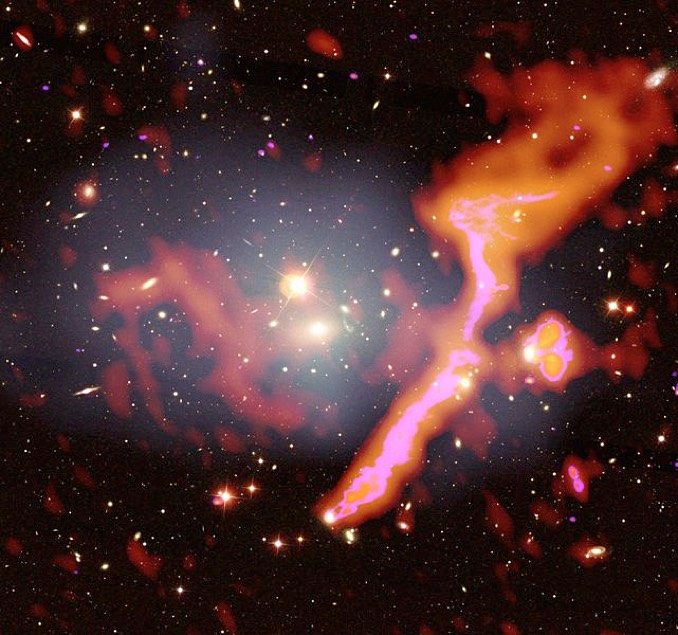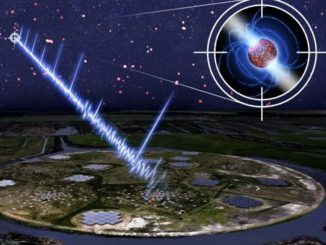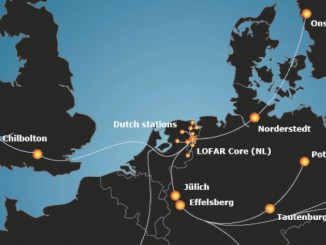
In the initial stages of a new sky survey, the Low Frequency Array – LOFAR – radio telescope has covered a quarter of the northern sky. In the first 10 percent of that data to be released, an international team of astronomers has found 300,000 radio sources, almost all of them previously undetected galaxies. The team expects to find upwards of 15 million radio sources by the time the survey is complete.
“This sky map will be a wonderful scientific legacy for the future,” said Carole Jackson, Director General of ASTRON, the Netherlands Institute for Radio Astronomy. “It is a testimony to the designers of LOFAR that this telescope performs so well. … Just imagine some of the discoveries we may make along the way. I certainly look forward to it.”
But pulling those discoveries from the LOFAR data is a challenge, requiring networked computers in multiple locations using powerful new algorithms.
“LOFAR produces enormous amounts of data – we have to process the equivalent of 10 million DVDs of data,” said Cyril Tasse, a researcher at the Observatoire de Paris. “The LOFAR surveys were recently made possible by a mathematical breakthrough in the way we understand interferometry.”
Raymond Oonk, with the SURFsara information communications technology center in Amsterdam, said the LOFAR data set “is the largest astronomical data collection in the world.”
“Processing the enormous data sets is a huge challenge for scientists. What normally would have taken centuries on a regular computer was processed in less than one year using the high throughput compute cluster (Grid) and expertise.”
A special issue of the journal Astronomy & Astrophysics features 26 papers describing initial results from the LOFAR survey. Supermassive black holes and galaxy clusters are major topics of interest.


